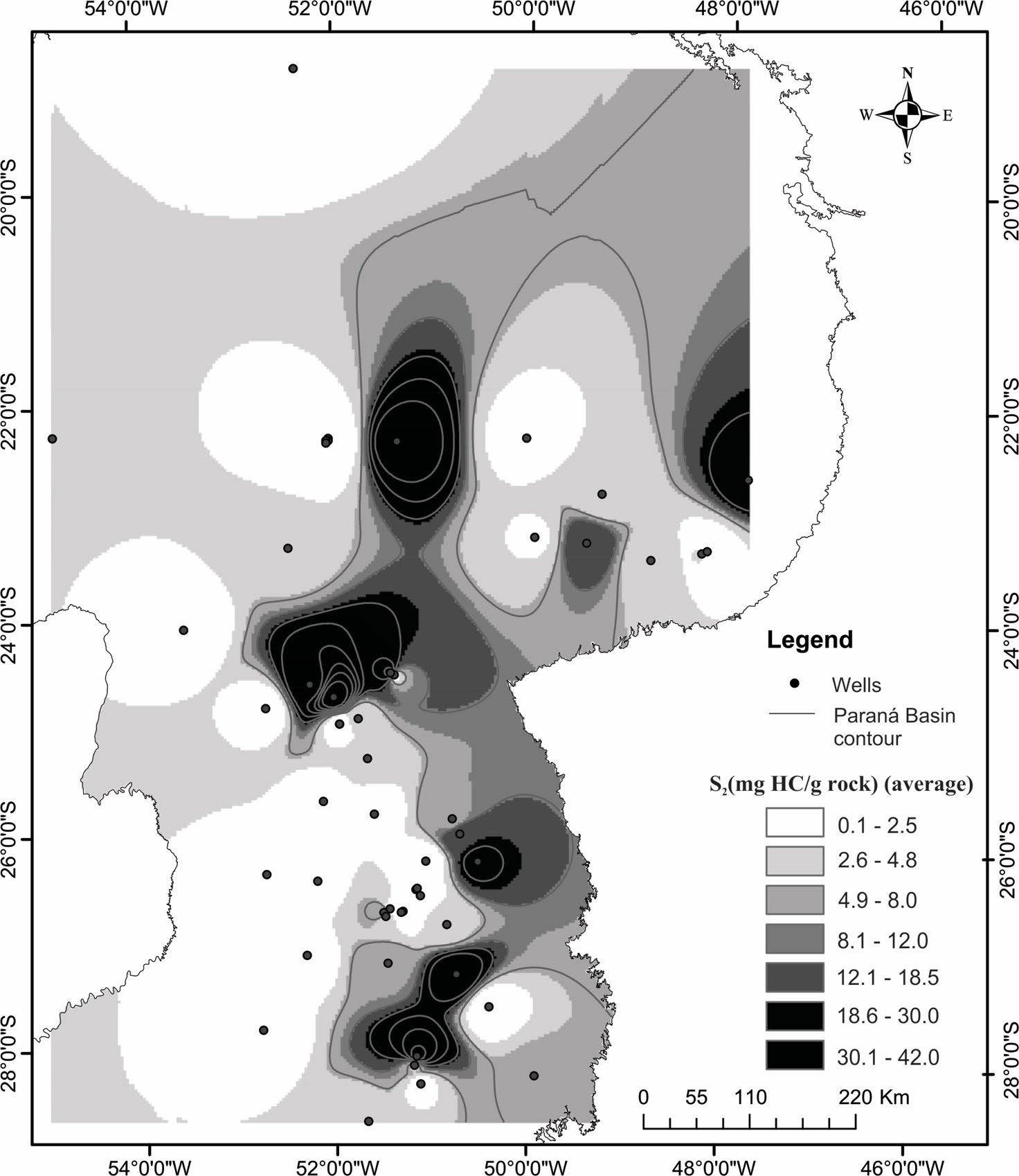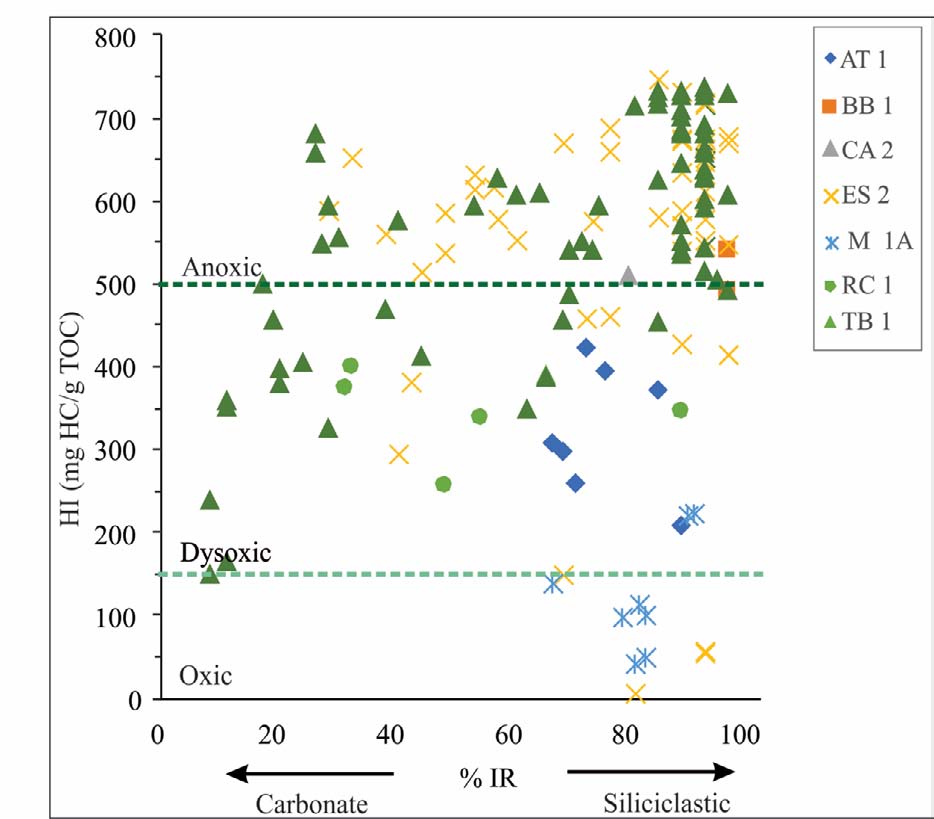Abstract
The organic geochemistry of organic-rich facies including shales, marls, and carbonates (Assistência Member) of the Irati Formation, Paraná Basin, Brazil, were analyzed to evaluate the thermal effects of igneous intrusions upon the kerogen present in these facies. Total organic carbon (TOC) content and hydrocarbon source potential (S2) of the Irati source rocks range from 0.03 to 20.4% and 0.01 to 112.1 mg HC/g rock, respectively, indicating excellent potential as a source for hydrocarbon generation. Hydrogen index (HI) values reveal that the kerogen is predominantly type I (HI: up to 892.6 mg HC/g TOC) and, therefore, an oil source, except for samples having low TOC content due to severe maturation caused by the heat from diabase intrusions. The thickness of igneous intrusions in the 64 wells investigated in this study ranged from 2 to 231 m. They clearly had a major impact on TOC, HI, and S2 values, which decrease in the vicinity of intrusions, indicating a gradual increase in maturation toward the igneous body. In wells without the influence of igneous intrusions, Tmax values of Rock-Eval pyrolysis and %Ro indicate that the organic matter is immature for the generation of hydrocarbons.
Keywords:
Irati Formatio; atypical petroleum syste; igneous intrusio; thermal maturit; organic-rich shale

 Thumbnail
Thumbnail
 Thumbnail
Thumbnail
 Thumbnail
Thumbnail
 Thumbnail
Thumbnail
 Thumbnail
Thumbnail
 Thumbnail
Thumbnail
 Thumbnail
Thumbnail
 Thumbnail
Thumbnail
 Thumbnail
Thumbnail
 Thumbnail
Thumbnail
 Thumbnail
Thumbnail
 Thumbnail
Thumbnail
 Source: adapted from Milan et al. (
Source: adapted from Milan et al. ( Source: adapted from the Companhia de Pesquisa de Recursos Minerais (
Source: adapted from the Companhia de Pesquisa de Recursos Minerais (





 Source: modified from Euzébio et al. (
Source: modified from Euzébio et al. (
 Source: modified from Euzébio et al. (
Source: modified from Euzébio et al. (